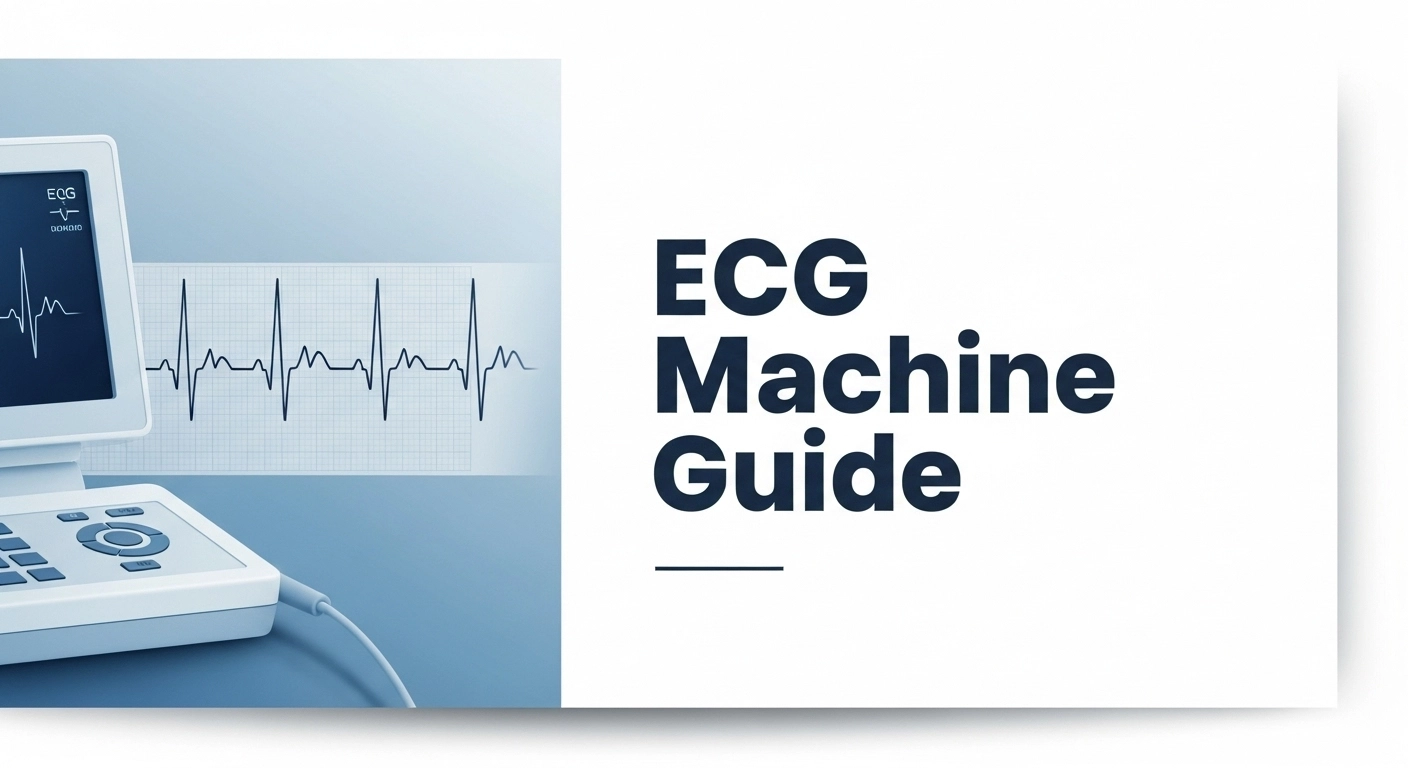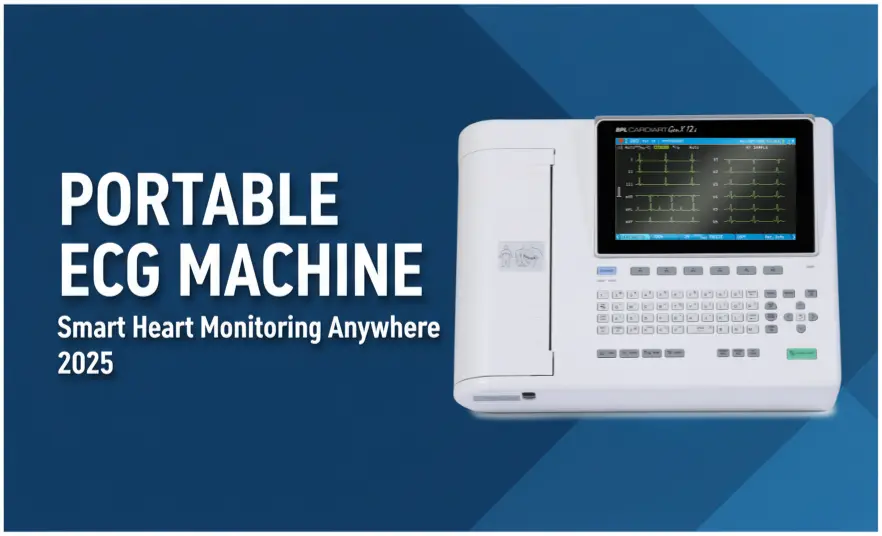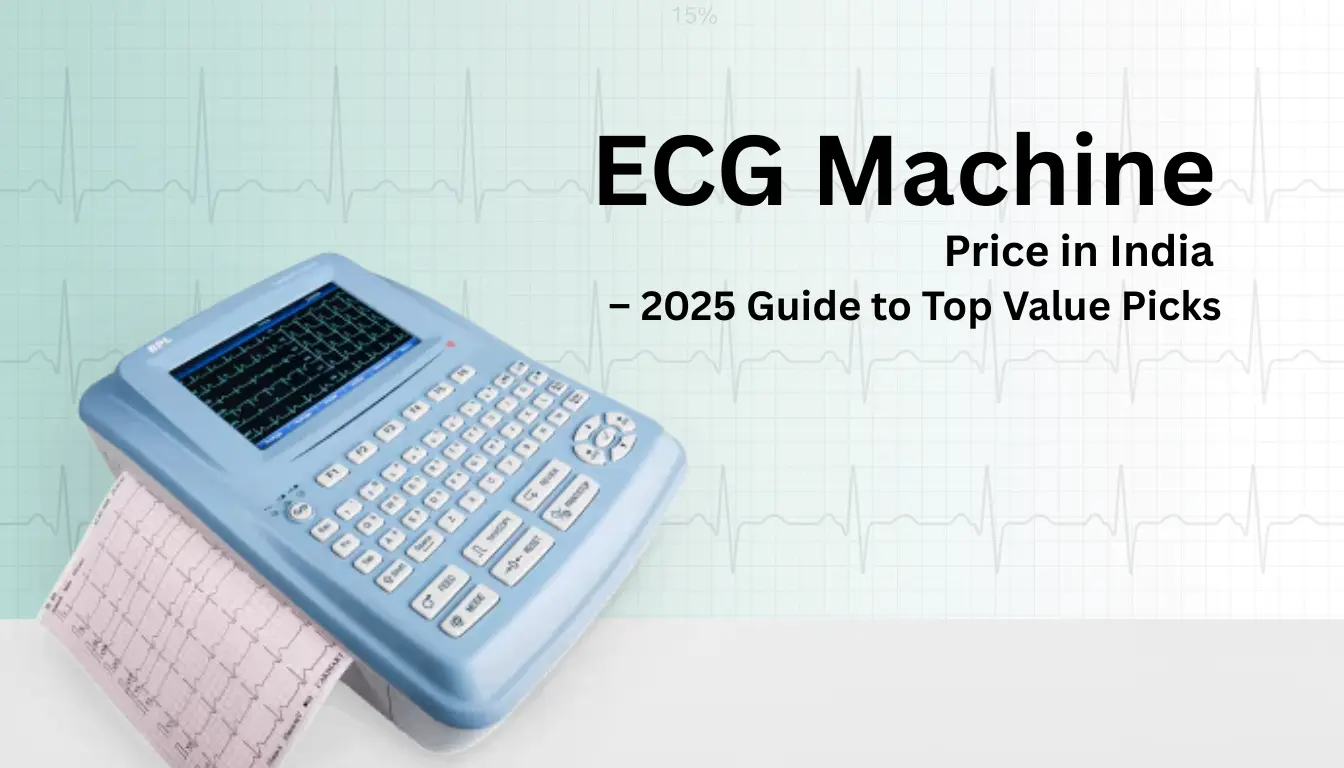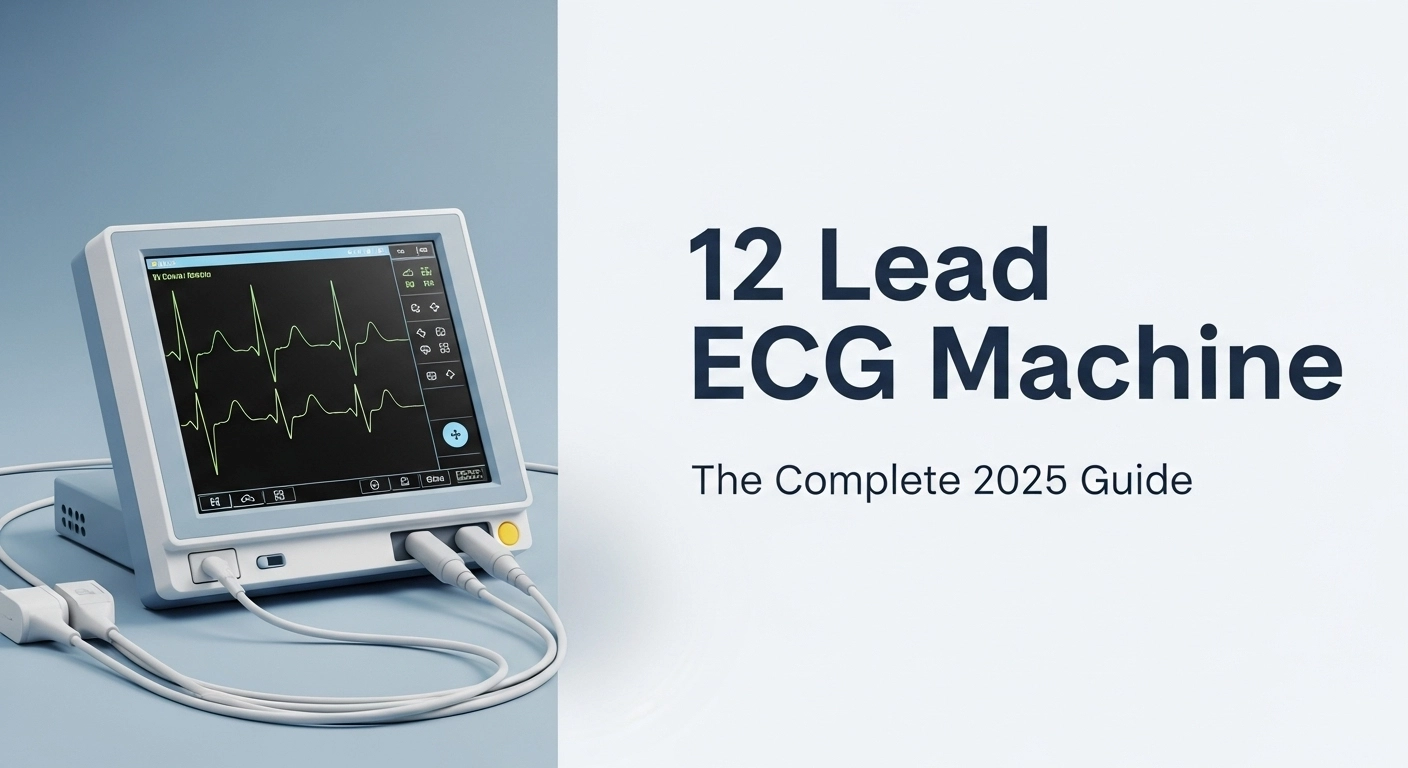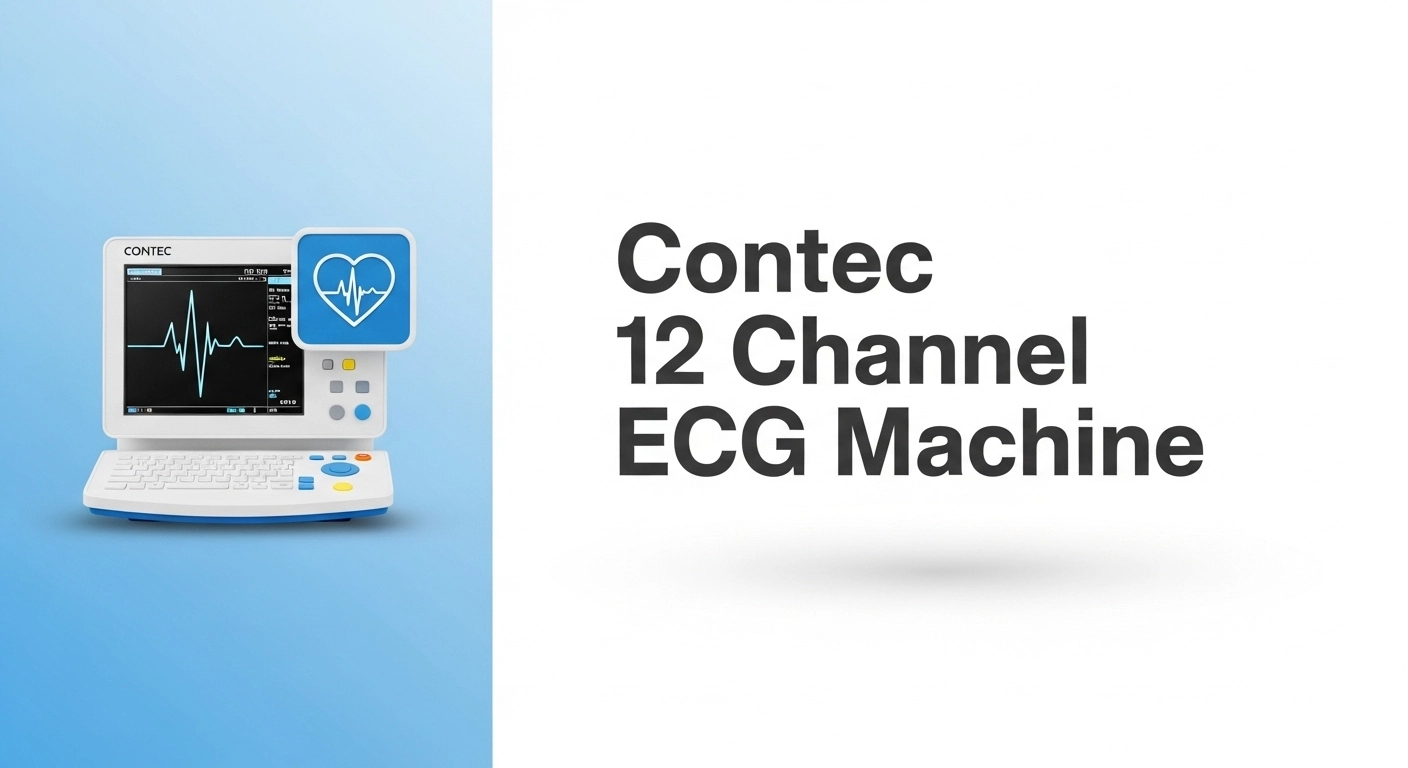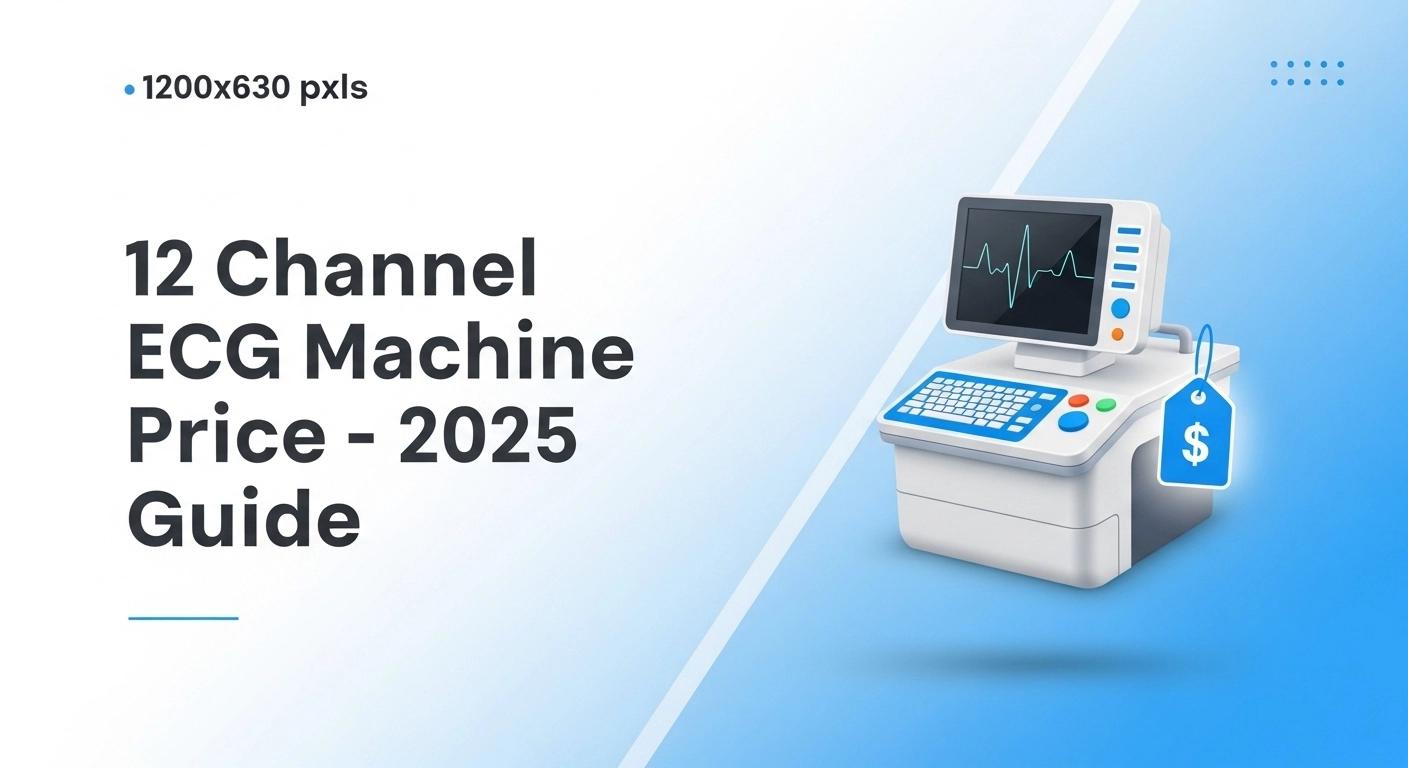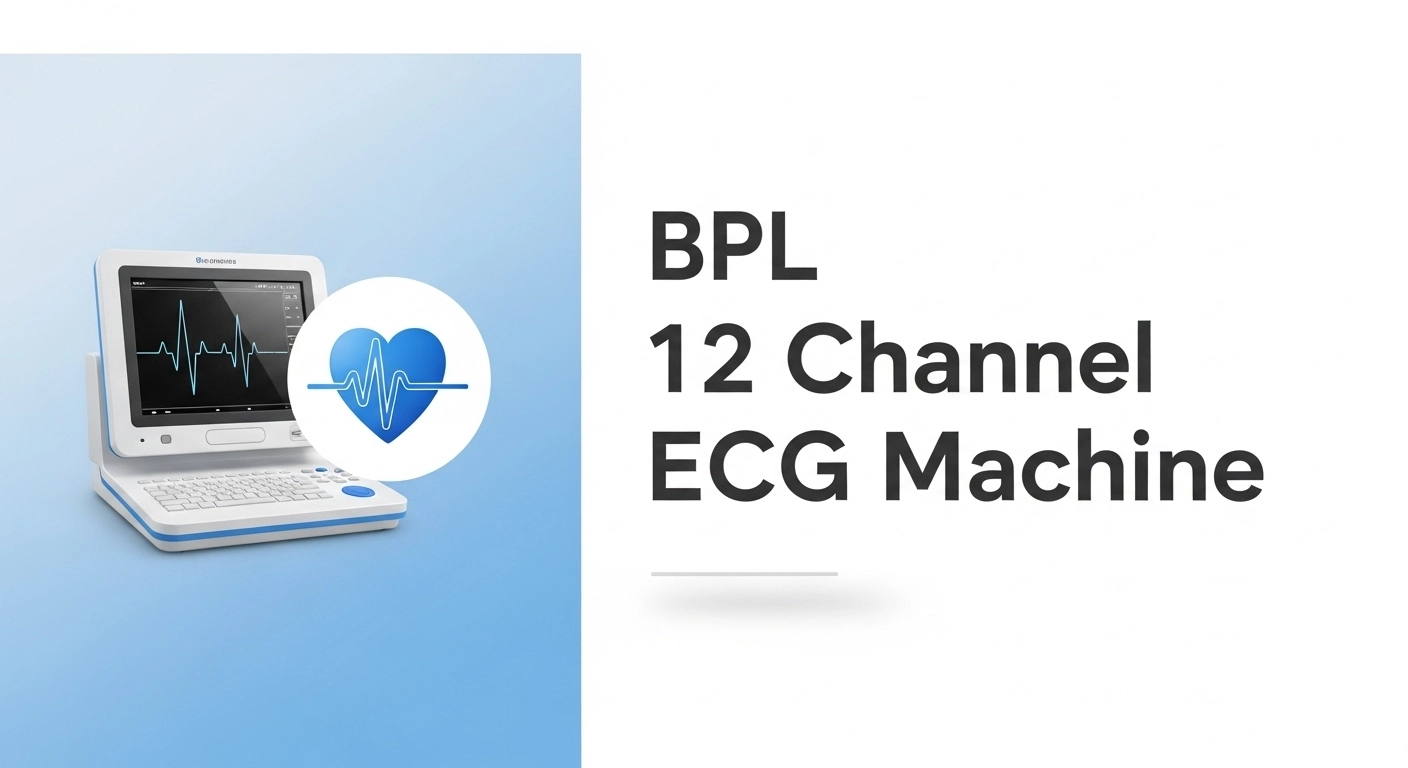Discover the ECG machine, its key benefits, and uses in heart health. Learn how it saves lives with accurate heart diagnostics.
ECG Machine: A Complete Guide to Benefits, Uses, and Importance in Heart Health
Introduction:
An ECG machine is a crucial medical device used to monitor heart health. It records the heart’s electrical activity and helps detect heart problems early. Understanding how an ECG machine works and its importance can save lives. In this guide, we will explain the benefits and common uses of ECG machines. Whether you are a healthcare professional or a patient, this information will be helpful in making informed heart health decisions.
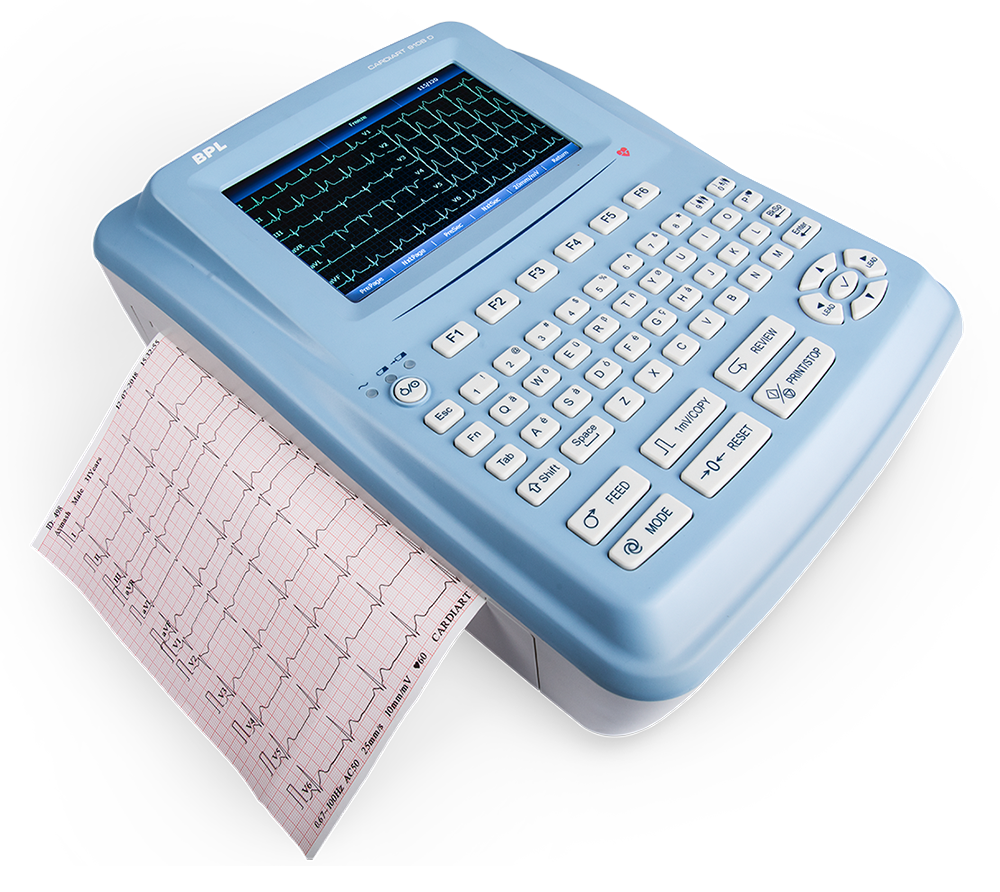
What is an ECG Machine?
An ECG (electrocardiogram) machine measures the electrical signals of the heart. It creates a graph called an ECG tracing, showing the heartbeat pattern. Doctors use this data to detect irregularities such as arrhythmias, heart attacks, or other heart diseases. It is a non-invasive, painless test and very common in hospitals and clinics.
How Does an ECG Machine Work?
The ECG machine attaches small electrodes to the skin, usually on the chest, arms, and legs. These electrodes pick up electrical impulses produced by the heart. The device then records these signals and displays them as waveform graphs. Healthcare providers analyze these waves to check heart rhythm and function.
Key Benefits of an ECG Machine
- Early detection of heart conditions
- Non-invasive and safe procedure
- Quick and easy to perform
- Helps guide treatment for heart diseases
- Monitors the effects of heart medication
- Can predict risk of future heart problems
- Portable versions available for emergency use
Common Uses of an ECG Machine
- Diagnosing heart attacks and arrhythmias
- Checking chest pain causes
- Monitoring heart health after surgery
- Regular heart health checkups
- Assessing effects of heart medications
- Screening athletes for heart conditions
Types of ECG Machines
- Resting ECG machine: Used while the patient is still
- Stress test ECG machine: Records heart activity during exercise
- Holter monitor: Portable, records heart signals over 24-48 hours
- Event monitor: Activated by patient when symptoms occur
How to Read an ECG Report
An ECG report shows several waves: P wave, QRS complex, and T wave. The timing and shape of these waves indicate different heart functions. If the waves are normal, the heart rhythm is healthy. Any changes or irregularities could suggest heart problems needing further tests.
Tips for Using an ECG Machine Effectively
- Ensure electrodes are placed correctly for accurate results.
- Ask the patient to relax and stay still during the test.
- Regularly calibrate the machine for precision.
- Combine ECG readings with other heart tests for comprehensive diagnostics.
Frequently Asked Questions (FAQs)
Q1: Is an ECG machine painful?
No, the ECG test is painless and non-invasive. Electrodes only stick to the skin without causing discomfort.
Q2: How long does an ECG test take?
Usually, the test takes 5 to 10 minutes from start to finish.
Q3: Can an ECG machine detect a heart attack?
Yes, it can detect patterns that indicate a current or recent heart attack.
Q4: Are there portable ECG machines?
Yes, portable and wearable ECG devices like Holter monitors are widely available.
Q5: How often should I get an ECG test?
It depends on your heart condition. Regular checkups are recommended for those with risk factors or symptoms.
Conclusion:
The ECG machine is an essential tool in modern medicine to protect heart health. It provides quick, reliable information about heart function. Early diagnosis with an ECG machine can lead to effective treatment and better outcomes. Whether in hospitals or at home with portable devices, ECG machines save lives by monitoring heart activity carefully.
